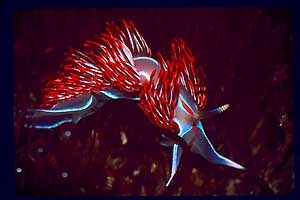
With the prolonged gray-sky (Seattle) weather stretching into July, I started looking for subjects and techniques to get some sort of advantage: subjects I could pursue regardless of the gloom; techniques that eliminate a gray sky. Shooting under a gray sky is like photography in a studio moved outdoors—you just don’t want to point your camera to include the sky in the picture. I narrowed my choices to floral portraits with a telephoto (narrow angle-of-view), or intimate close-ups with macro. What I settled on was high-magnification close-ups in the yard.
In close-up photography, increasing subject magnification is attained with a variety of hardware: close-up diopters, extension tubes, tele-extenders, a dedicated macro lens, and finally, reverse lens stacking. There are a few other hardware choices, but that’s the gist. I no longer own a macro lens; I’ve never purchased or used close-up diopters (filters). But even taking those off the table, I still have plenty to get close with.
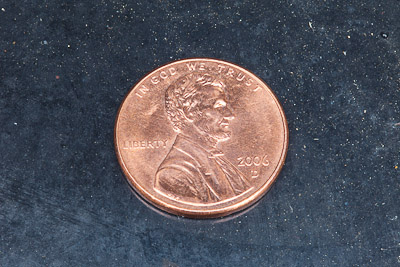
Close-up photography is all about magnification, so knowing the magnification is key. The close-focusing ability of a lens—or lens combination—can be measured by comparing a subject’s size on film (or sensor) relative to its real-life size. The general rule is, if size-on-film is the same as real-life size, that’s called 1X. For example, photograph a ¾” diameter penny at 1X, and it will be a ¾” width on the sensor as well, regardless of sensor size. Lens specs list magnification relative to this 1X standard. A typical (non-macro) lens might magnify to .10 or .25 life-size. A macro lens usually goes to 1X.
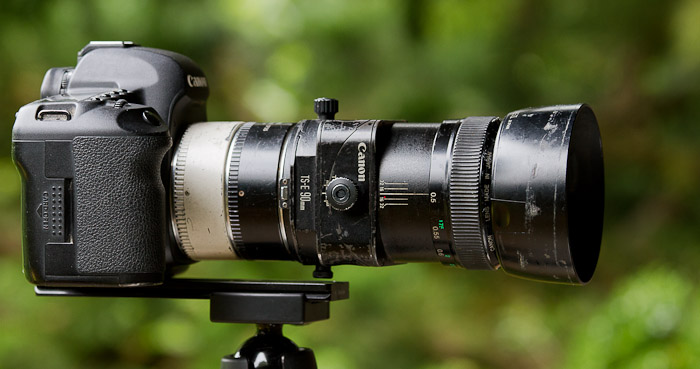
In the 90’s I went the macro lens route with a 1X Canon 100mm f/2.8 Macro, which I augmented with extension tubes and tele-extenders to get me to about 2X. I put the lens to good use for tiny flowers and small tide pool critters. I also acquired a 90mm f/2.8 TS-E (tilt/shift) that is a reasonably good close-up lens. Its magnification is .29X, meaning Honest Abe would stretch to about .22” (.75”x .29) on a sensor. Using other tools in my kit, I found that by adding a 25mm extension tube to the 90mm, I’d get to about .60X, and if I put a 1.4x tele-extender on that, I’d get to .84X. This was close to 1X, and it was easy kit to put together and use. The sea slug Hermissenda Crassicornis (top right), barely an inch long, is an example of its use. The tilt feature of the 90mm TS-E has the added advantage of letting me shoot at angles to a subject. I could better control reflected glare so often an issue in tide pools, or more easily parallel the pedals of tiny flowers. Pretty soon I wasn’t using the 100mm macro any more, and then when I discovered the stacked lens strategy in John Shaw’s Closeups in Nature (AMPHOTO, 1987), it wasn’t long before I sold the 100mm f/2.8 Macro.
The beauty of the stacked lens is that it can be a powerful magnifier, well beyond 1X. Even better, you’re likely to already own the lenses to make it happen. What’s required is a short telephoto for the “prime”, on-camera mount; and a light-weight, normal or slight-wide-angle for the reversed lens. You’ll need to test combinations of lenses to discover what works. For me, my 90mm f/2.8 TS-E and 50mm f/1.8 work well.
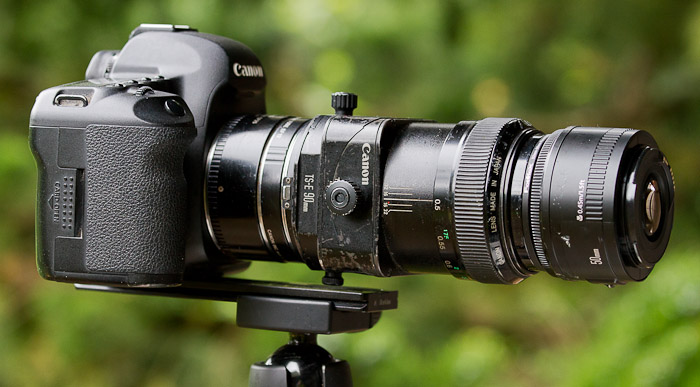
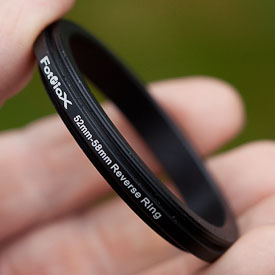
To set up the reversed stacked lens hardware, the “prime” lens mounts in normal fashion on the camera. The stacked lens mounts—in reverse—in front of it, with some means of holding them together. I used duct tape for a while to reverse mount my 50mm on the 90mm. For serious macro, though, you’ll want to purchase a “close-up reversing ring” or “macro coupling ring” with thread sizes to meet your need (about $10). The macro coupling is a metal ring with male-to-male threads that match the female filter threads of the candidate lenses. For me, the thread sizes are 58mm and 52mm, so what I need is a 52-58mm macro reverse ring. I screw the 58mm side of the coupling ring to the prime on-camera lens, and then screw the reversed stacking lens into the 52mm male thread that remains. Good to go—well, almost.
Vignetting—a darkening of the corners which can get quite severe—is a problem for most combinations of reversed stacked lenses. For my 90mm/50mm stack, if the 90mm lens is focused at infinity it shows vignetting quite a bit. Adding extension by close-focusing the lens gets rid of a lot it, and adding 37mm more with extension tubes (25mm +12mm) gets rid of the rest. As John Shaw says, “enough extension will solve any vignetting problem”.
The magnification formula for stacked lenses (from Shaw) is:
focal length prime/focal length stacked
So for my 90mm/50mm combo, that’s 1.8X! Not too shabby. A 50mm lens reverse stacked on a 200mm would be 4X!!! I tested out the 50mm f/1.8 on my Canon 70-200mm f/4L and got a paper-thin focus about an inch in front of the lens. To properly use that set-up, I’d need a 67-58mm reducing ring to add to my 58-52 coupling, or purchase a 52-67mm macro reverse ring. With 4X magnification, you’ll also need an awful lot of patience to work so tiny in the field; just a little nudge of the tripod, for example, and you’re likely to have lost the subject in a sea of OOF.
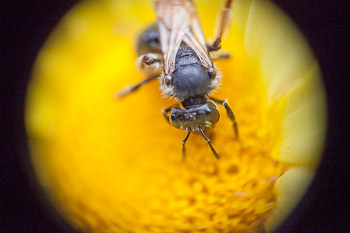

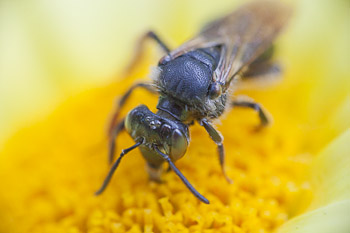
The paper-thin depth-of-field problem can be partly addressed by stopping down to tiny apertures, but this also degrades resolution significantly, a phenomena called “diffraction”. Image quality degrades when the light is forced through smaller and smaller apertures, and it gets worse with macro as the lens center moves farther and farther from the sensor. A digital solution to this problem, called ‘focus stacking’, is discussed in my 2011/06 tip. With focus stacking, you shoot multiple images at larger—and hence sharper—apertures, changing the focus with each shot. Software then cleverly combines the sharpest parts of the ‘stacked’ images.
For macro photography I use a long mounting plate to move the camera in and out without moving the tripod. The long plate has the utility of being something I always carry, but you’ll be far more efficient in the field if you set up using a piece of hardware called a focusing rail. Photographer Bob Johnson has a nice disussion of focusing rails on his website.
Gary